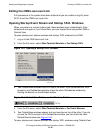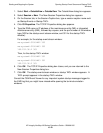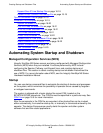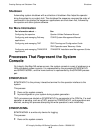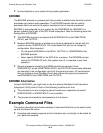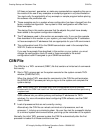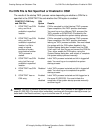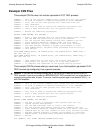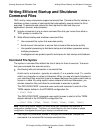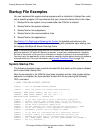
Creating Startup and Shutdown Files
HP Integrity NonStop NS-Series Operations Guide—529869-005
16-6
Establishing a CIIN File
•
The CONFTEXT configuration file located in the $SYSTEM.SYSnn subvolume has
an INITIAL_COMMAND_FILE entry for the CIIN file.
•
The CIIN file is available in the specified location.
•
The CIIN option is not disabled in the System Load dialog box.
Establishing a CIIN File
The CIIN file is configured at the factory as $DSMSCM.SYS.CIIN. You do not need to
establish this file. DSM/SCM automatically copies the CIIN file from the initial location
into each SYSnn you create.
The name of the CIIN file is specified in the INITIAL_COMMAND_FILE entry of the
CONFTEXT configuration file.
A system generation program (run from the DSM/SCM application) copies the file
specified in the CONFTEXT file onto the SYSnn subvolume on the disk and renames
the file CIIN. If no file is specified in CONFEXT, the operating system does not look for
the startup file SYSnn.CIIN at system startup, even if you enable that file. You cannot
simply copy a startup file to the SYSnn subvolume and name it CIIN.
Modifying a CIIN File
After the CIIN file is established on $SYSTEM.SYSnn (as part of running DSM/SCM),
you can modify the contents of SYSnn.CIIN with a text editor such as TEDIT. You
need not run DSM/SCM again to make these changes effective.
Note. By default, the CIIN file contains commands needed to start the (permanent) TACL
process pair and to reload all the processors in the system. Do not place commands to prime
the processors in the CIIN file.
Note. The CIIN file must be owned by a member of the super-group (255,n). HP recommends
that you specify “N” for the read access portion of the file security attribute (RWEP) to allow the
file to be read by any user on the network. For example, you might secure this file “NCCC.”



